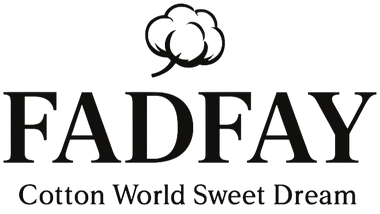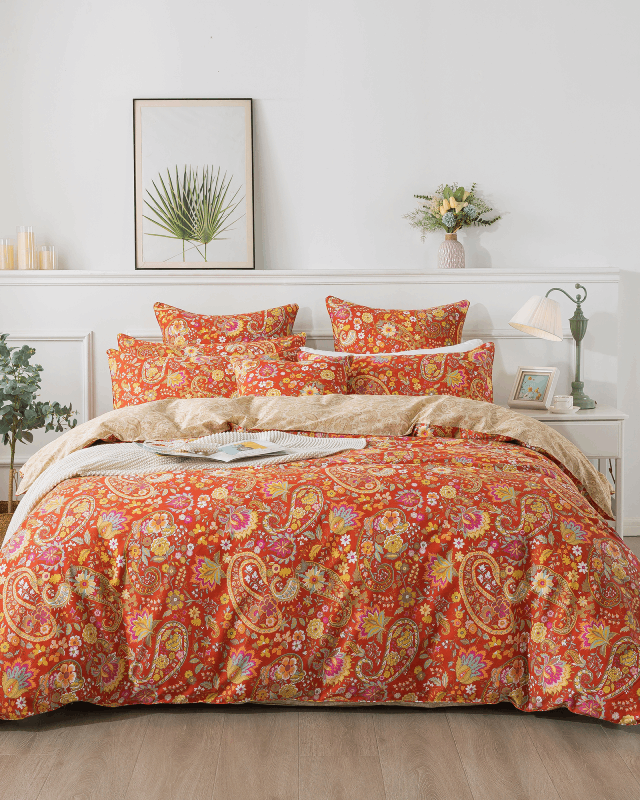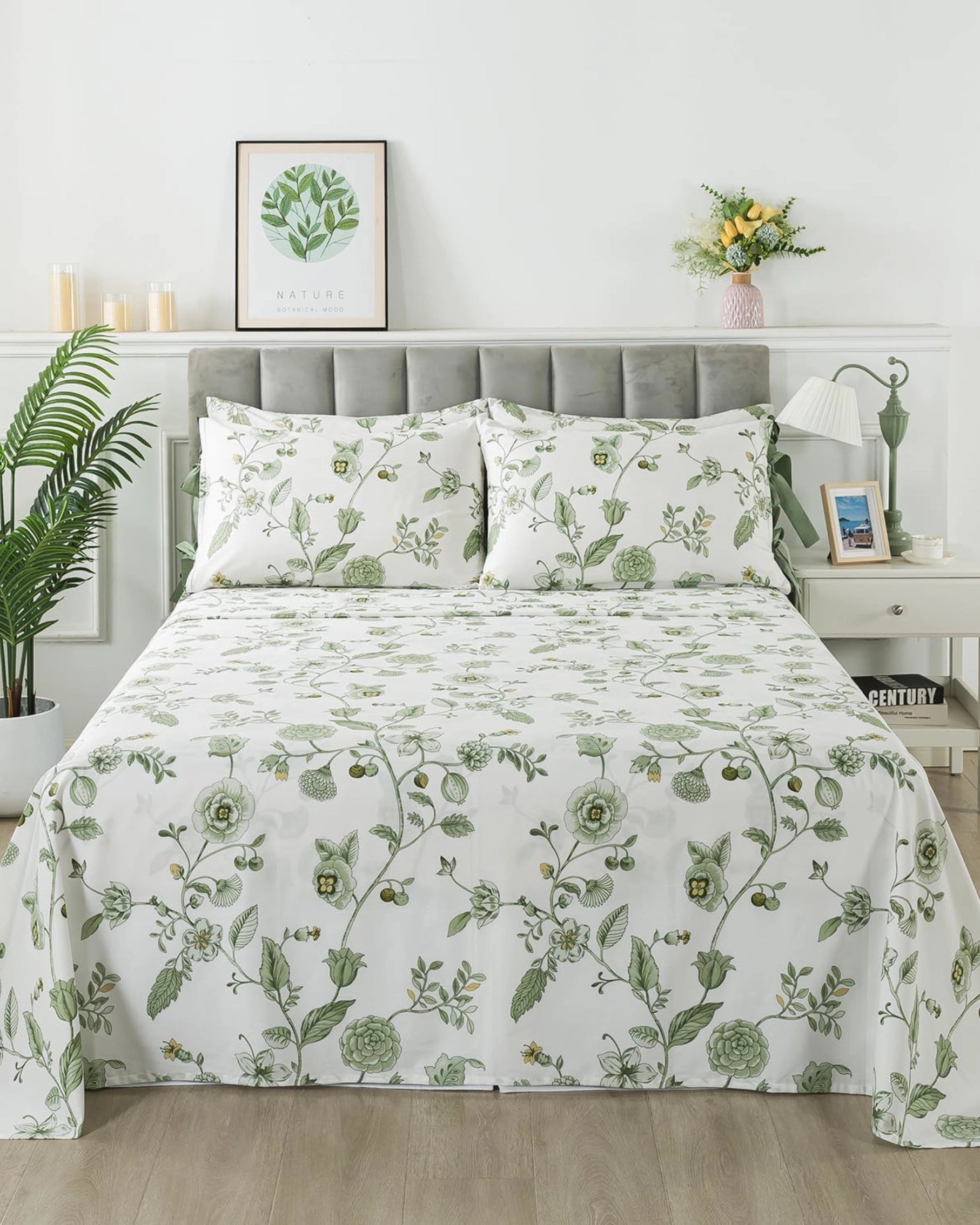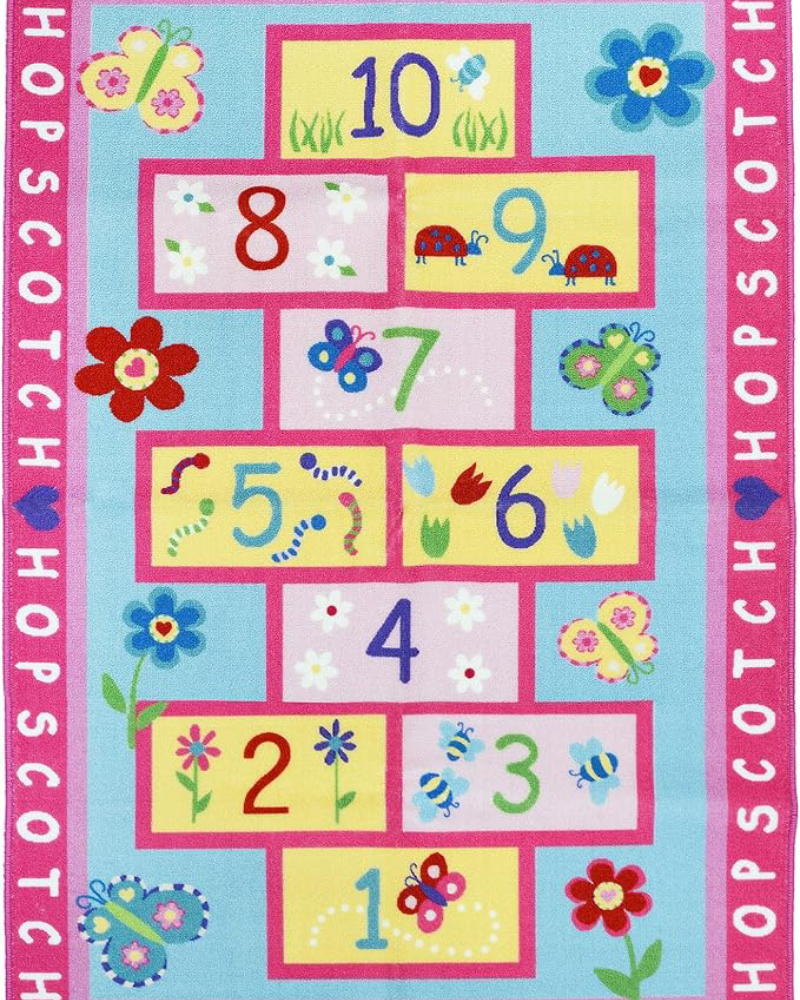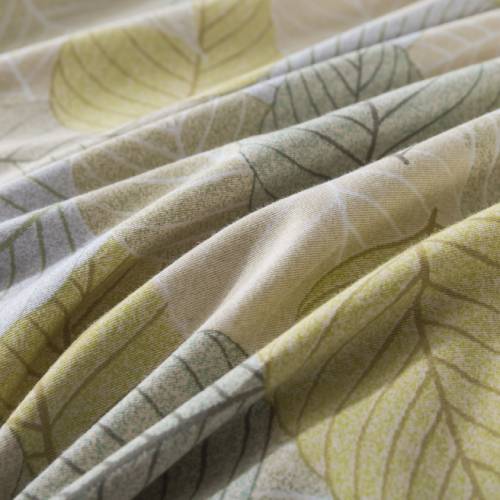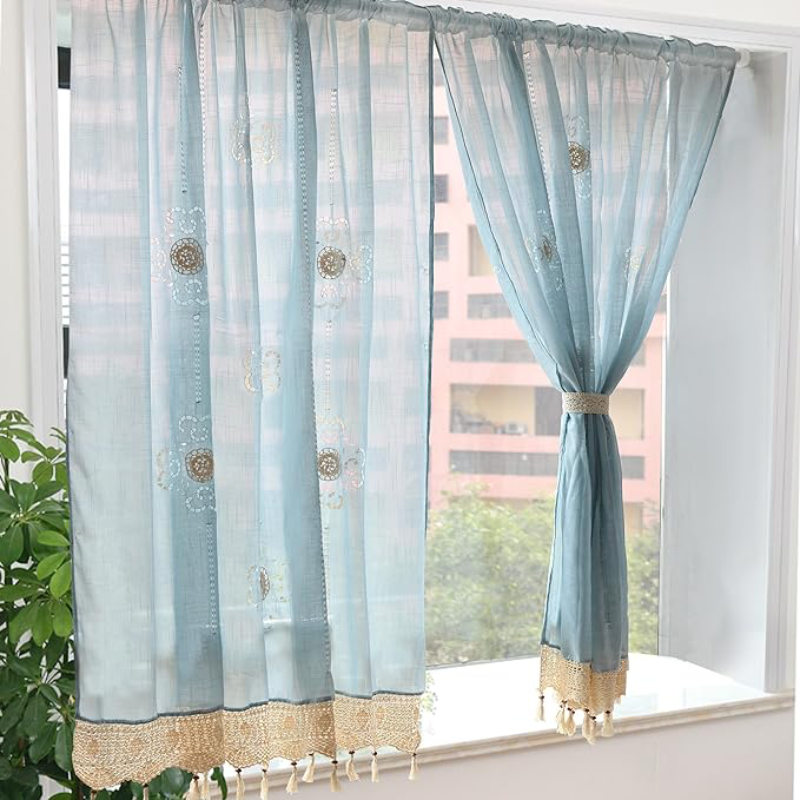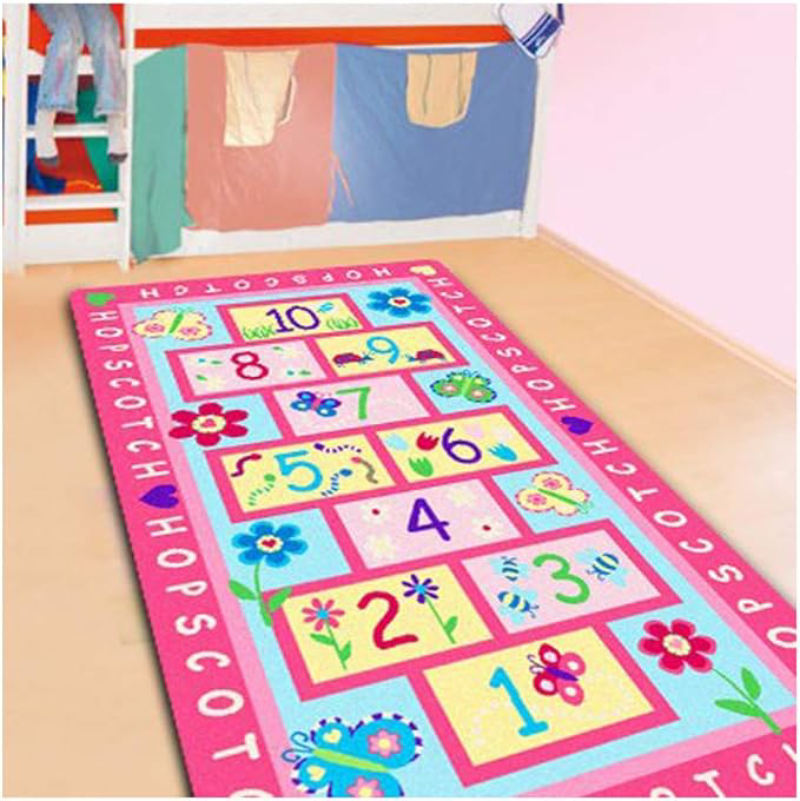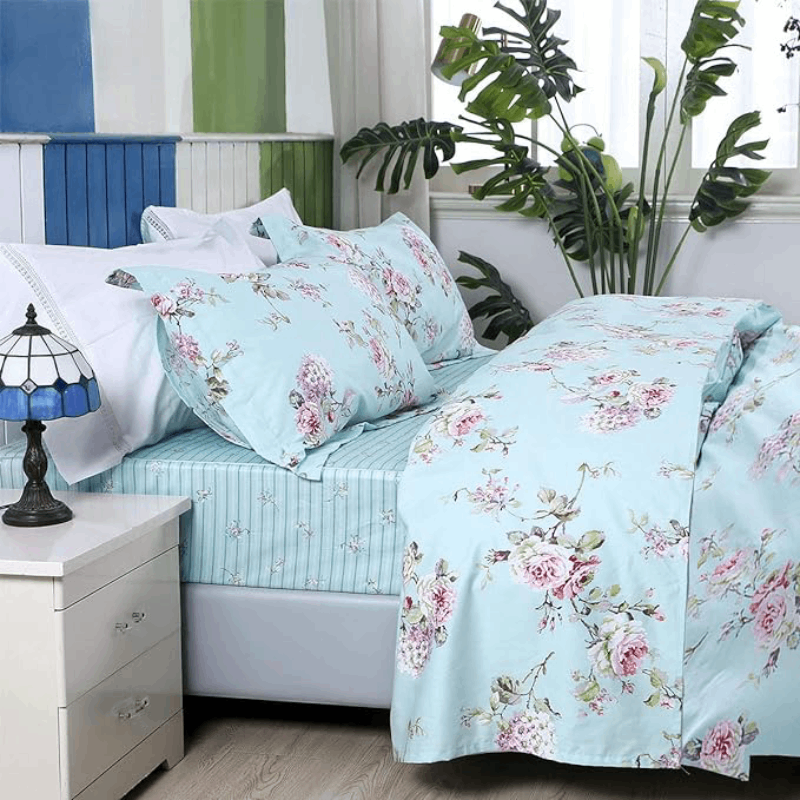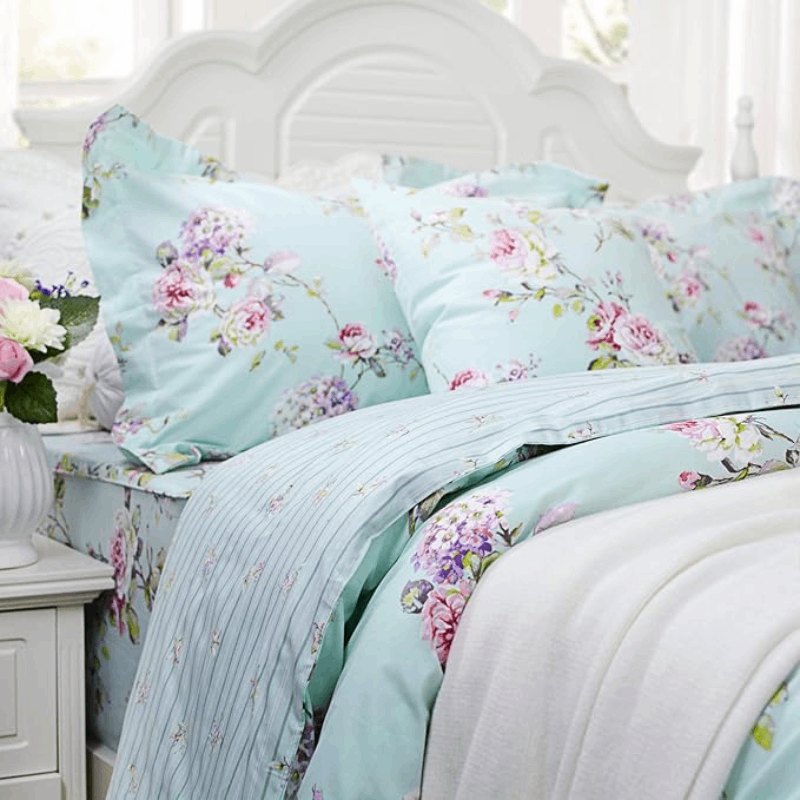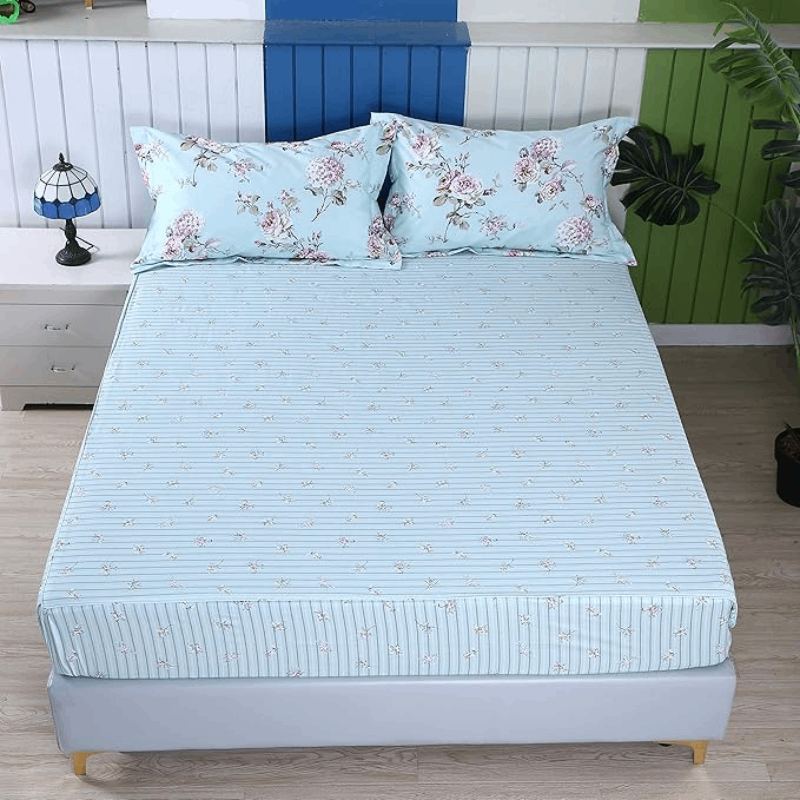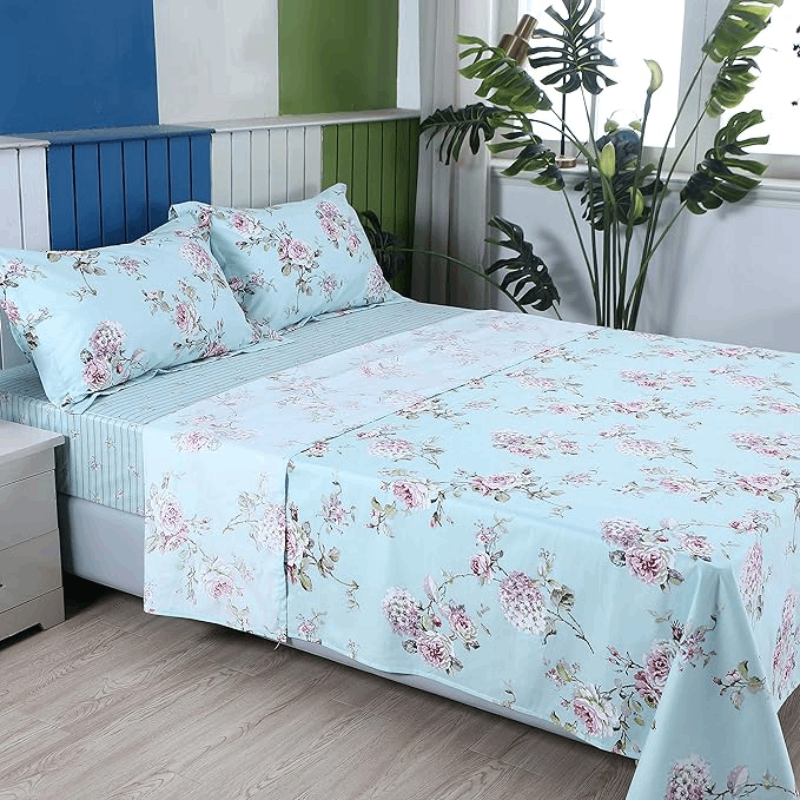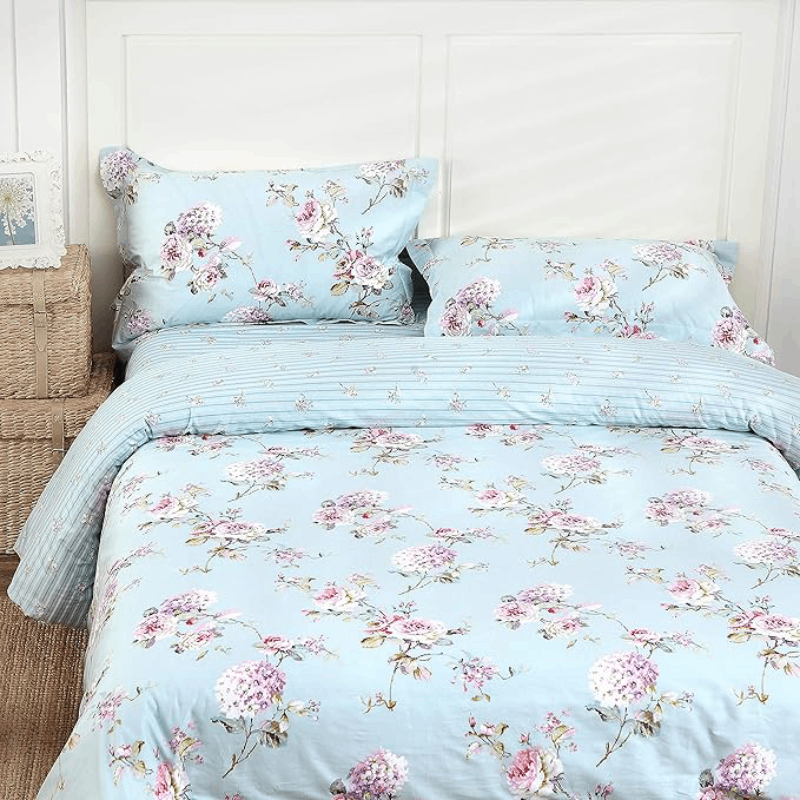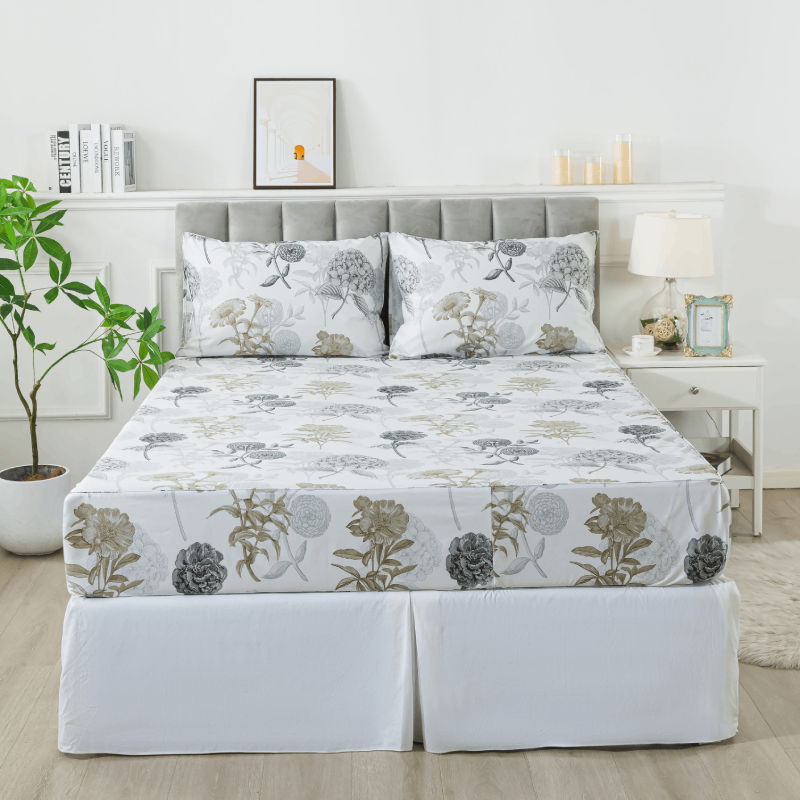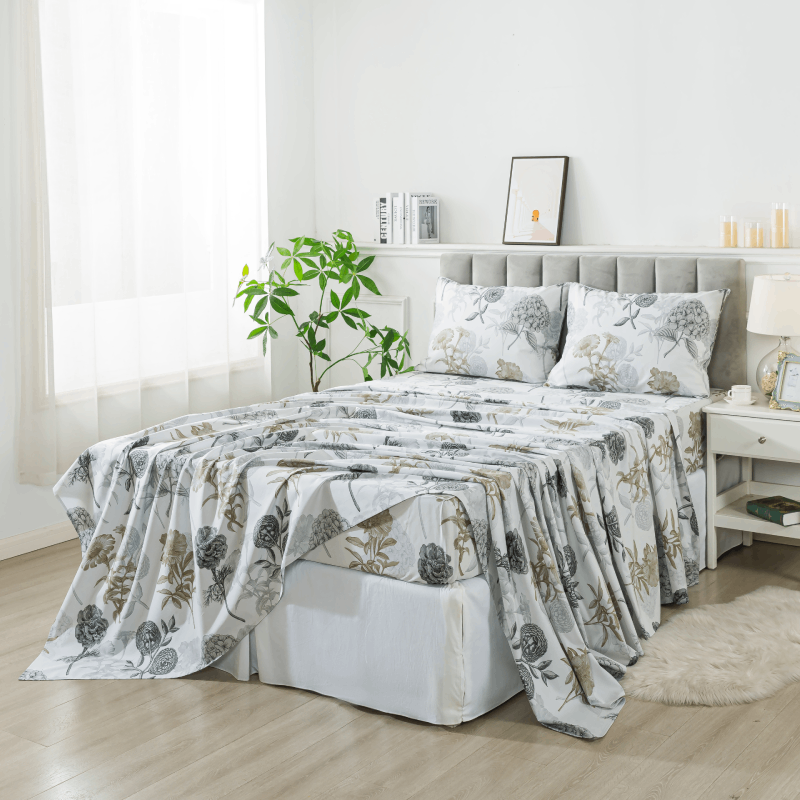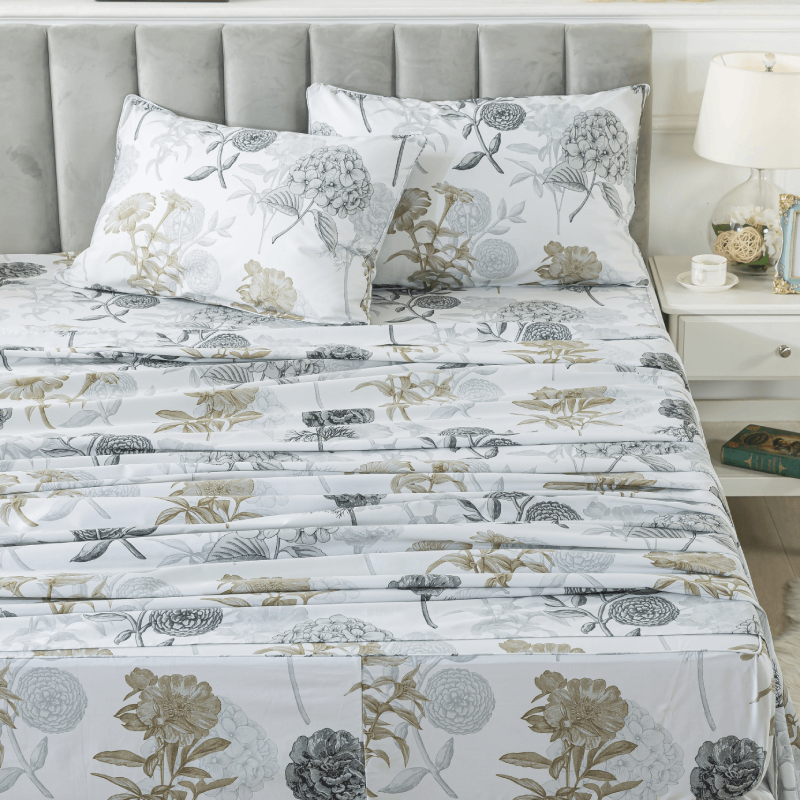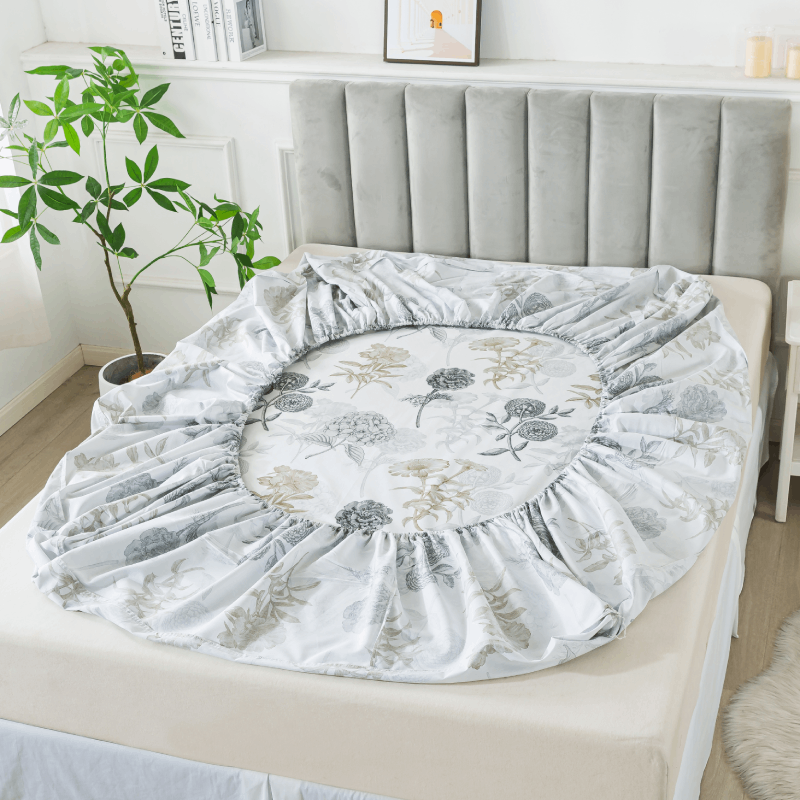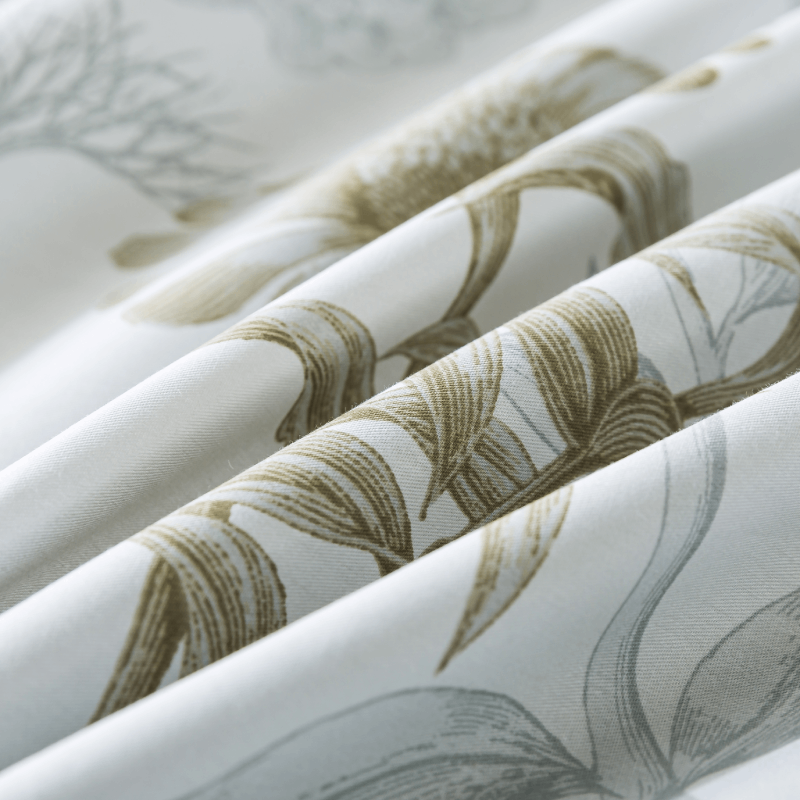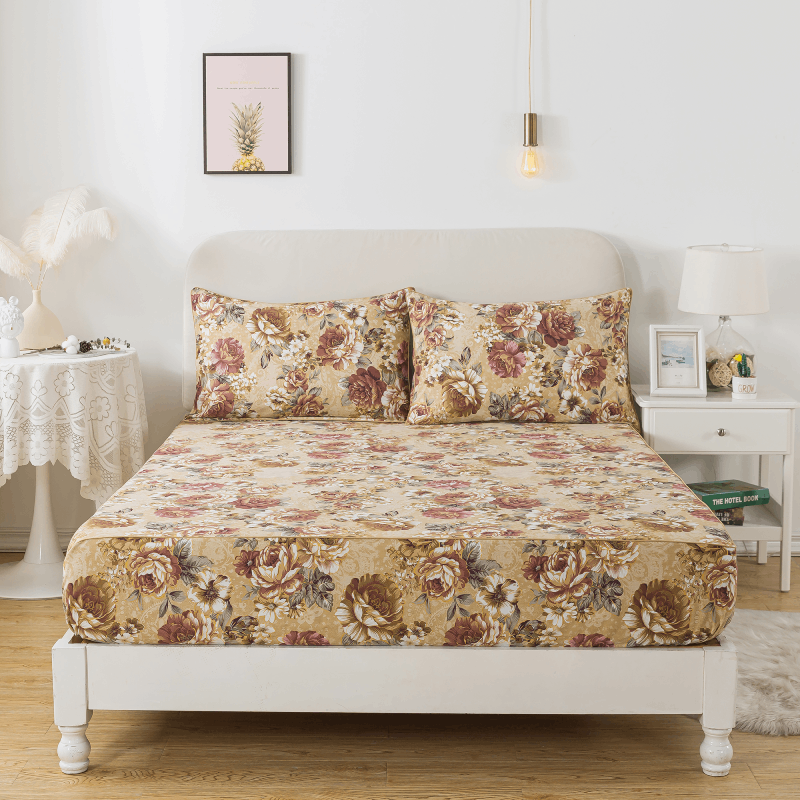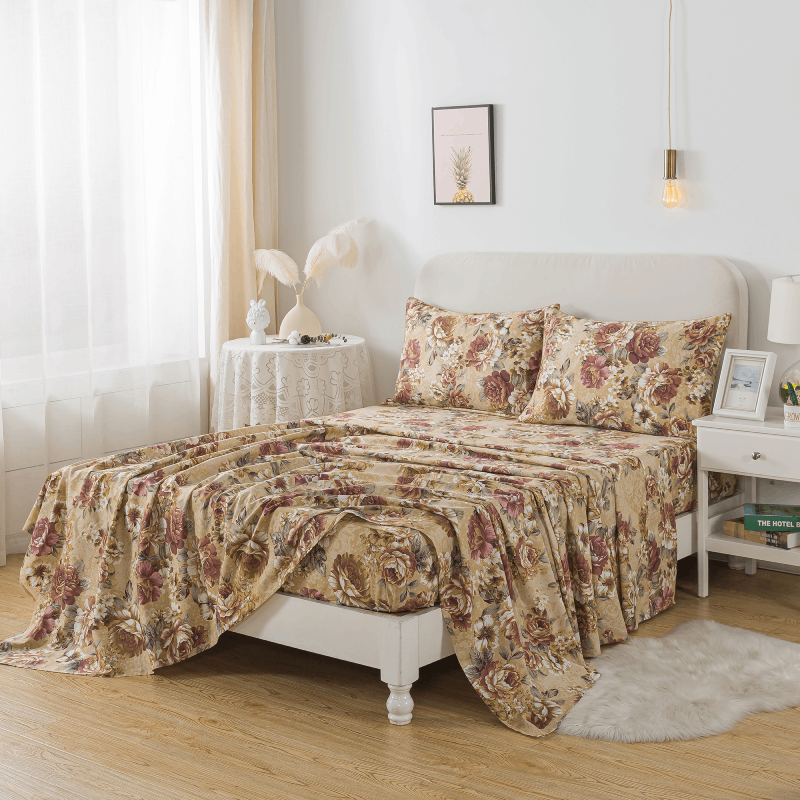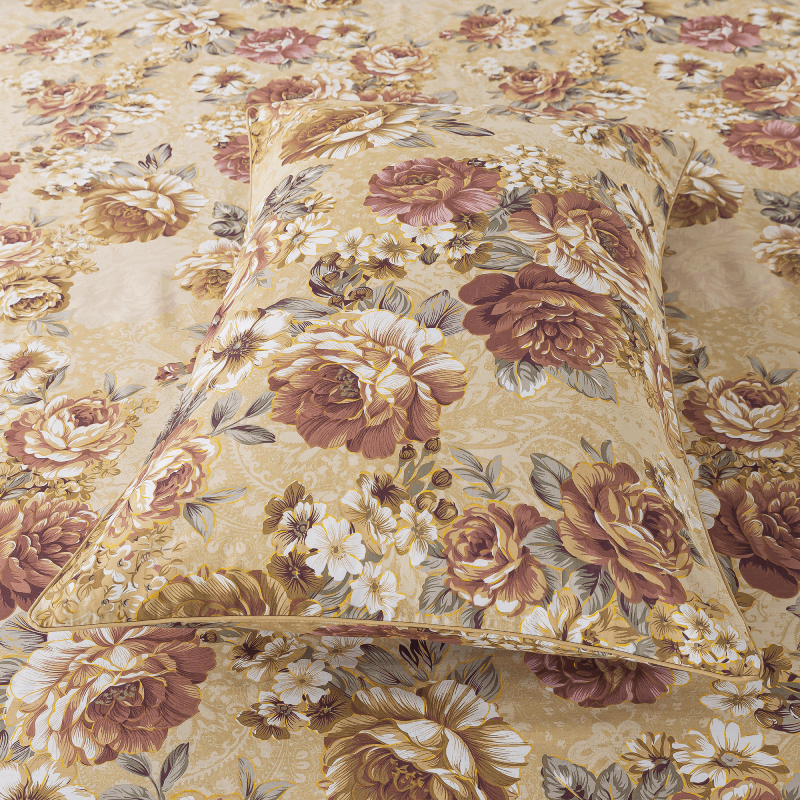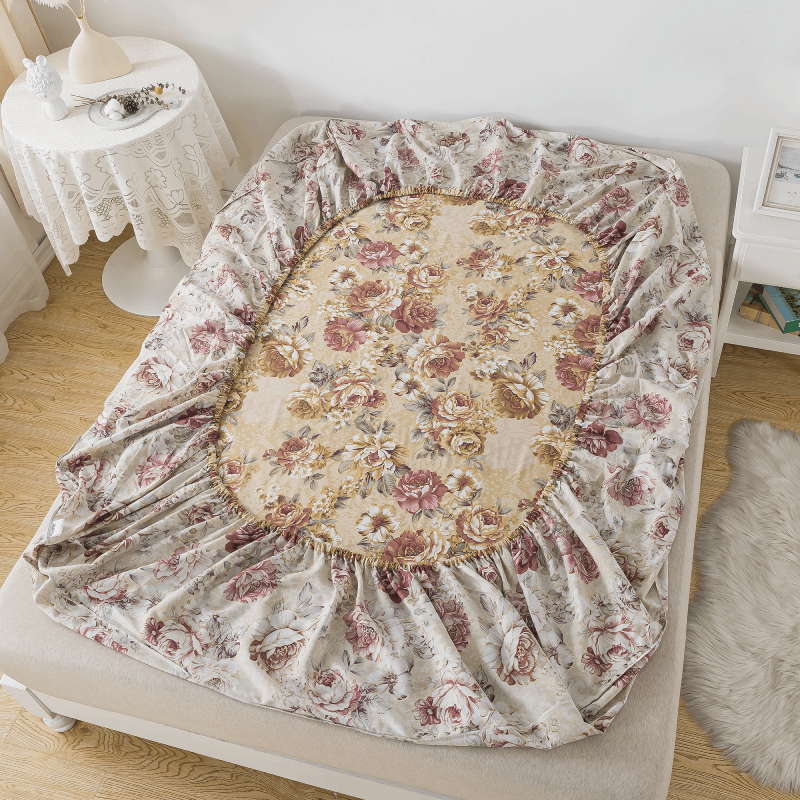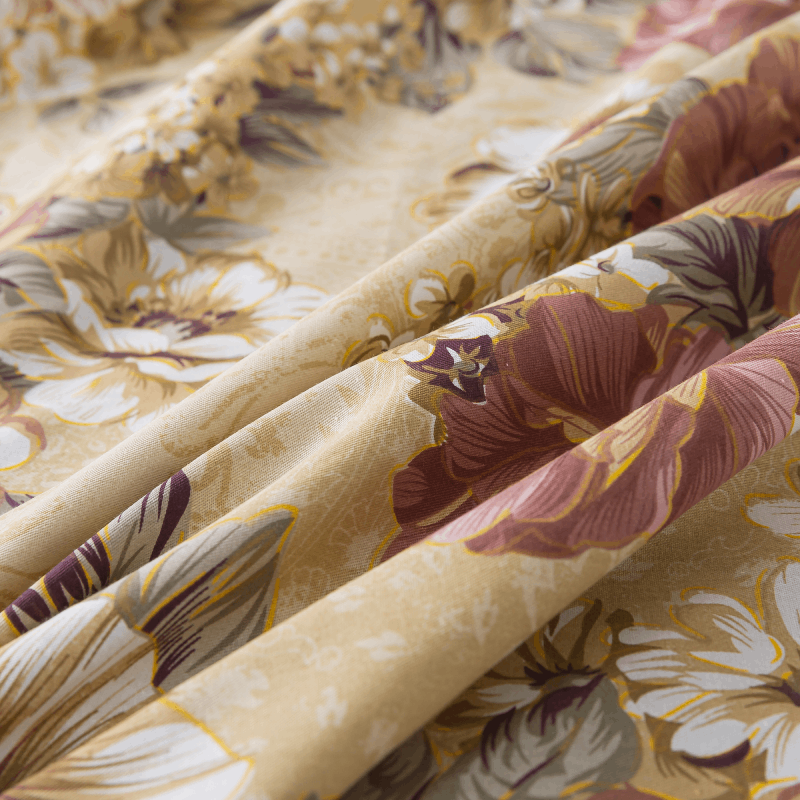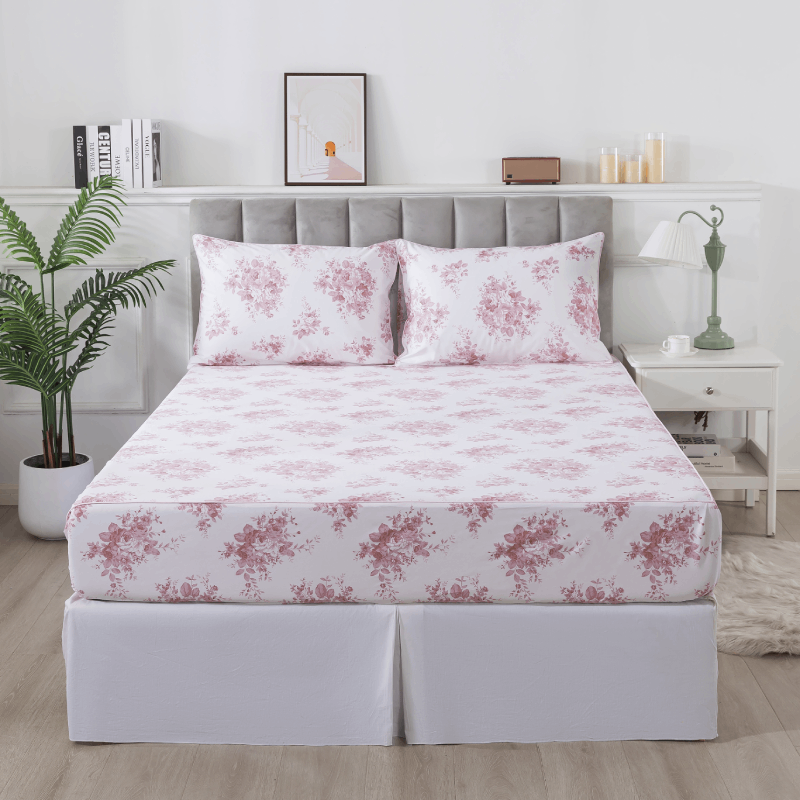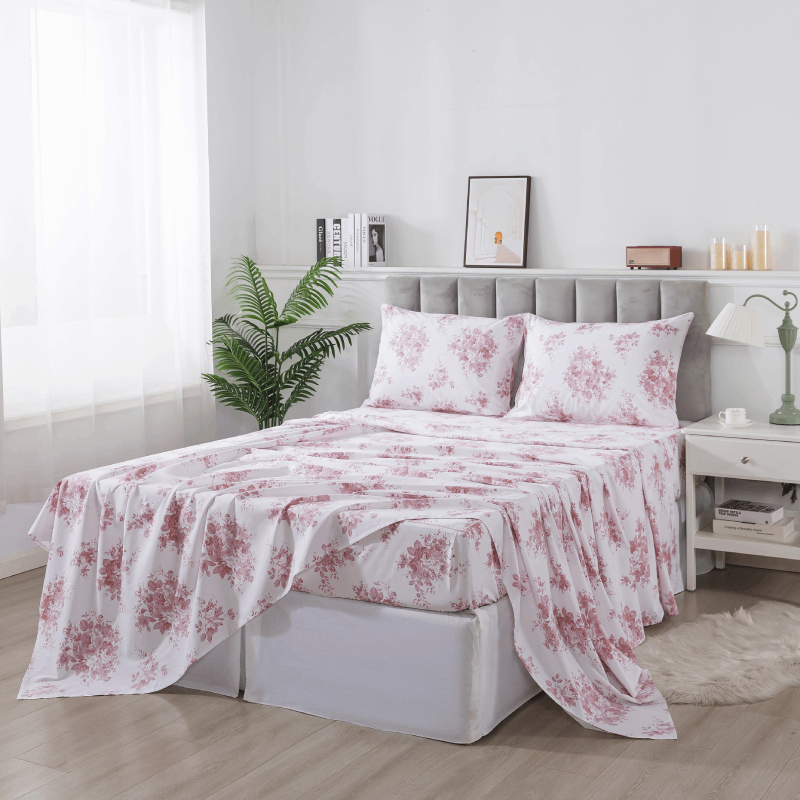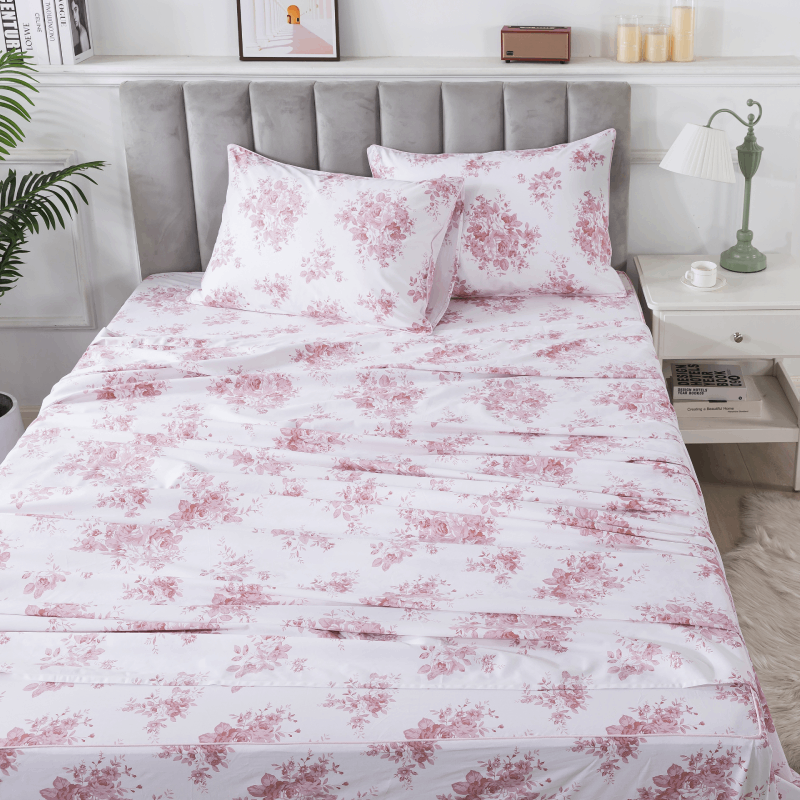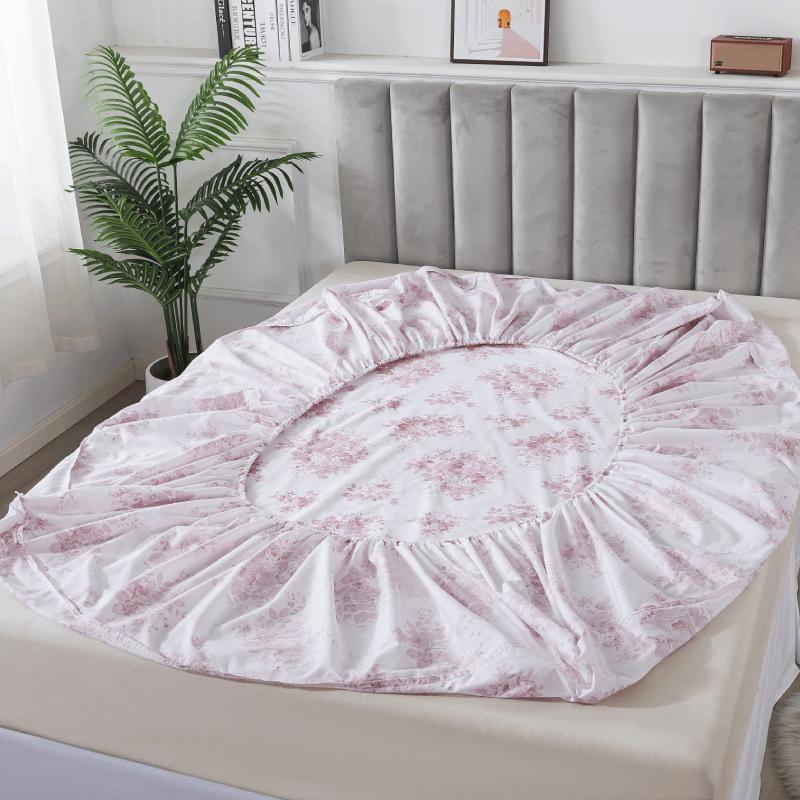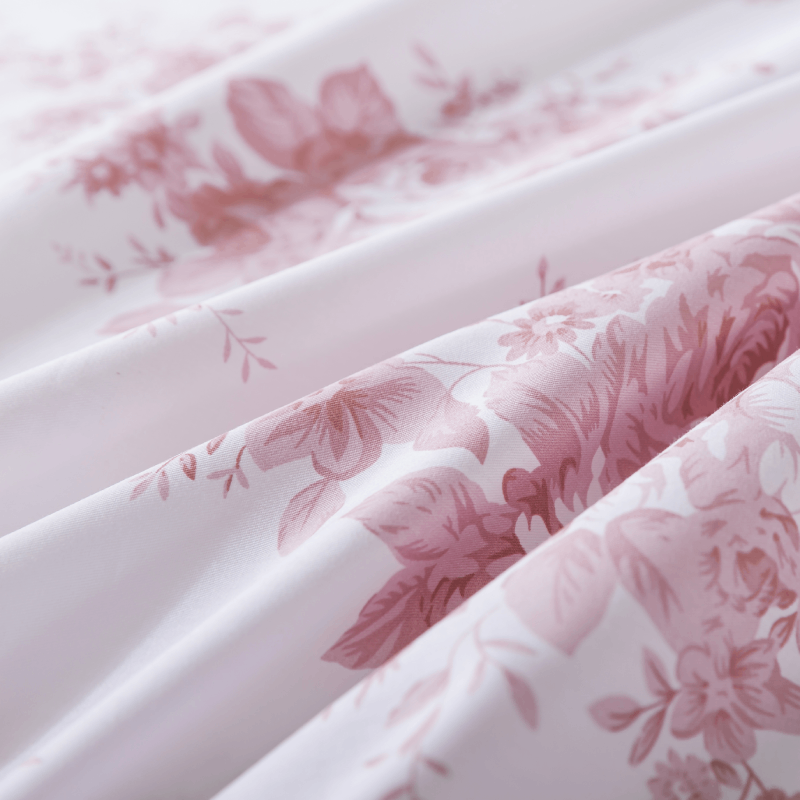Choosing bed sheets involves considering the manufacturing method—printed or woven. This affects their appearance, comfort, and durability. This guide compares printed and woven sheets across 8 key aspects to highlight their differences.
1.Printed Sheets and Woven Sheets Definition

Printed sheets are created by applying patterns or designs to the fabric surface using printing techniques. These designs are transferred using methods like screen printing, digital printing, or heat transfer, making them a surface-level addition to the fabric.
Woven sheets, on the other hand, integrate the pattern directly into the fabric during the weaving process. The design is created by interlacing threads of different colors, meaning the patterns are part of the fabric's structure. Unlike printed sheets, the design is woven into the fibers rather than applied afterward.
2. Suitable Fabrics for Printed Sheets and Woven Sheets
Printed Sheets: Printed designs can be applied to a variety of fabrics, especially cotton, polyester, and blended fabrics. The flexibility of printing allows for mass production of detailed and complex patterns on a wide range of fabric types.
Woven Sheets: Woven designs are typically found in high-quality natural fibers such as cotton, silk, and linen, or in premium blends. These fabrics are often used in luxury bedding due to their superior craftsmanship and durability.
3. Pattern Effect in Printed Sheets and Woven Sheets
Printed Sheets:
- Effect: Printed patterns offer vibrant, bold visuals. The designs can be highly detailed, ranging from complex, multi-colored art to photo-realistic images. Printed designs are generally more vivid and eye-catching.
- Advantages: Printed sheets can display intricate, gradient, and multicolored patterns, including artistic and photographic designs.
-
Disadvantages: Over time, printed designs can fade, crack, or wear off, especially after multiple washes. They tend to be less durable than woven designs.
Woven Sheets:
- Effect: Woven patterns tend to have a more natural and sophisticated look. Since the design is created during the weaving process, woven patterns are typically more subtle and may feature a 3D texture.
- Advantages: Woven patterns are highly durable and maintain their original look for a long time. They often have a refined, elegant texture that enhances the feel of the fabric.
-
Disadvantages: The complexity of woven patterns is often limited. While beautiful, they cannot achieve the same level of detail or multi-color complexity as printed designs.
4. Durability of Printed Sheets and Woven Sheets
Printed designs are generally less durable than woven patterns. Over time, especially with frequent washing, printed designs may fade or peel, particularly if made from lower-quality materials or not printed with durable methods.
Woven sheets are extremely durable since the pattern is embedded within the fabric. The design will not fade or wear off over time, even with frequent washing. Woven sheets tend to last longer and maintain their appearance for years.
5. Comfort of Printed Sheets and Woven Sheets
Since the print is applied to the surface of the fabric, it generally does not affect the fabric's softness. Printed sheets remain smooth and comfortable without compromising the fabric’s natural feel.
Woven sheets tend to feel more luxurious and natural due to the seamless integration of the design. Without an additional "printed layer," woven sheets are often softer and more supple, making them ideal for those prioritizing comfort.
6. Cost Comparison of Printed Sheets and Woven Sheets
Printed sheets are typically more affordable to produce. The printing process is relatively simple and quick, making it cost-effective for mass production. Digital printing, in particular, reduces production costs, making printed sheets ideal for large-scale manufacturing.
Woven sheets are more expensive due to the complexity of the weaving process. Each design requires precise planning and control of the thread interlacing. The higher production cost often leads to a higher retail price for woven sheets.
7. Applications of Printed Sheets and Woven Sheets
Printed sheets are perfect for mass production of bedding with complex or trendy designs. They are commonly used in duvet covers, pillowcases, and bed sheets with intricate patterns that might be too complex to weave.
Woven sheets are often used in high-end, luxury bedding. These are typically found in boutique collections, premium home linens, and hotel bedding due to their superior durability and elegant design.
8. Visual and Tactile Experience of Printed Sheets and Woven Sheets
Printed Sheets:
- Visual Effect: Printed patterns are generally vibrant and eye-catching, offering a broad range of colors and details. They can capture intricate details, such as gradients, photos, or illustrations.
-
Tactile Feel: Since the design is on the surface of the fabric, printed sheets feel smooth but may lack texture or depth.
Woven Sheets:
- Visual Effect: Woven patterns are more subtle and refined, often adding depth and a sophisticated texture to the fabric. These patterns are typically more understated and elegant.
-
Tactile Feel: The woven design gives the fabric a rich texture, making it feel softer and more luxurious. The tactile experience of woven sheets is often more refined compared to printed sheets.
Conclusion
In summary, both Printed Sheets and Woven Sheets have their unique advantages. Printed sheets are great for intricate designs and cost-effective production, making them ideal for mass-market bedding. On the other hand, woven sheets are more durable, luxurious, and long-lasting, often used in high-end, premium bedding products.
